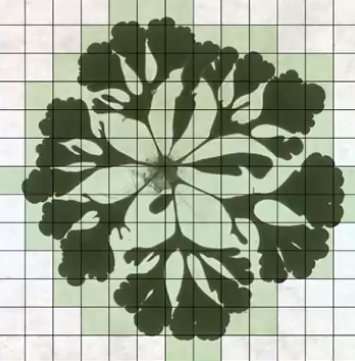Researchers from North Carolina State University have found that gallium indium (EGaIn), a liquid metal with one of the highest surface tensions, can be induced to spread and form patterns called fractals with the application of low voltage. The work has implications for controlling the shape of liquid metals.
Surface tension is the force exerted by the surface of a liquid that causes it to "bead up" or form droplets. Water, for example, has a high surface tension, so it beads up, whereas alcohol, with a lower surface tension, tends to spread out. Liquid metals, such as mercury, have enormous surface tension and thus are almost always spherical. In fact, EGaIn has the highest surface tension of any known liquid at room temperature.
In a surprising finding, NC State professor of physics Karen Daniels and professor of chemical and biomolecular engineering Michael Dickey discovered that applying low voltage to the surface of EGaIn causes the liquid metal to spread out and form snowflake-like fractal patterns.
"Applying voltage to EGaIn forms a thin layer of oxide on the surface of the metal, which effectively lowers the surface tension," Dickey says. "Normally, the tension of liquids can be lowered by adding surfactants - like putting soap or detergent in water - to the liquid. It's easy to put soap into water, but hard to get the soap out. In contrast, the use of voltage to control the tension is interesting because it is reversible, and incredibly effective."
Applying voltage to liquid metal creates fractals. Credit: Michael Dickey, North Carolina State University
"We also found that if you apply higher amounts of voltage to the metal it stops spreading and beads up again," Daniels says. "That's due to the amount of oxide produced - a small amount lowers the surface tension, but too much forms a crust over the metal and stops it spreading. So controlling the voltage is a nice way to control the spreading of the metal."
The researchers recorded the metal's behavior as the surface tension lowered. Less than one volt of electricity caused the metal to spread out and form different fractals, or patterns. Interestingly, the fractals formed by the EGaIn appear to be unique; that is, they do not match any currently described fractals. "Aside from being unusual, the other implication of these fractals is that in order for them to form the surface tension of the liquid metal must be close to zero," Daniels says.
"This work suggests that not only does the formation of the oxide lower the surface tension of the liquid metal, but that it also creates compressive stresses - the opposite of tension - that help the metal spread out and form fractals," Dickey says. "This is interesting because liquids are always under tension, and we now have a tool to apply compressive forces directly to the surface of a liquid. These properties give us greater control over the metal's behavior."
The work appears in Physical Review Letters.
More information: Collin B. Eaker et al, Oxidation-Mediated Fingering in Liquid Metals, Physical Review Letters (2017). DOI: 10.1103/PhysRevLett.119.174502
Journal information: Physical Review Letters
Provided by North Carolina State University























